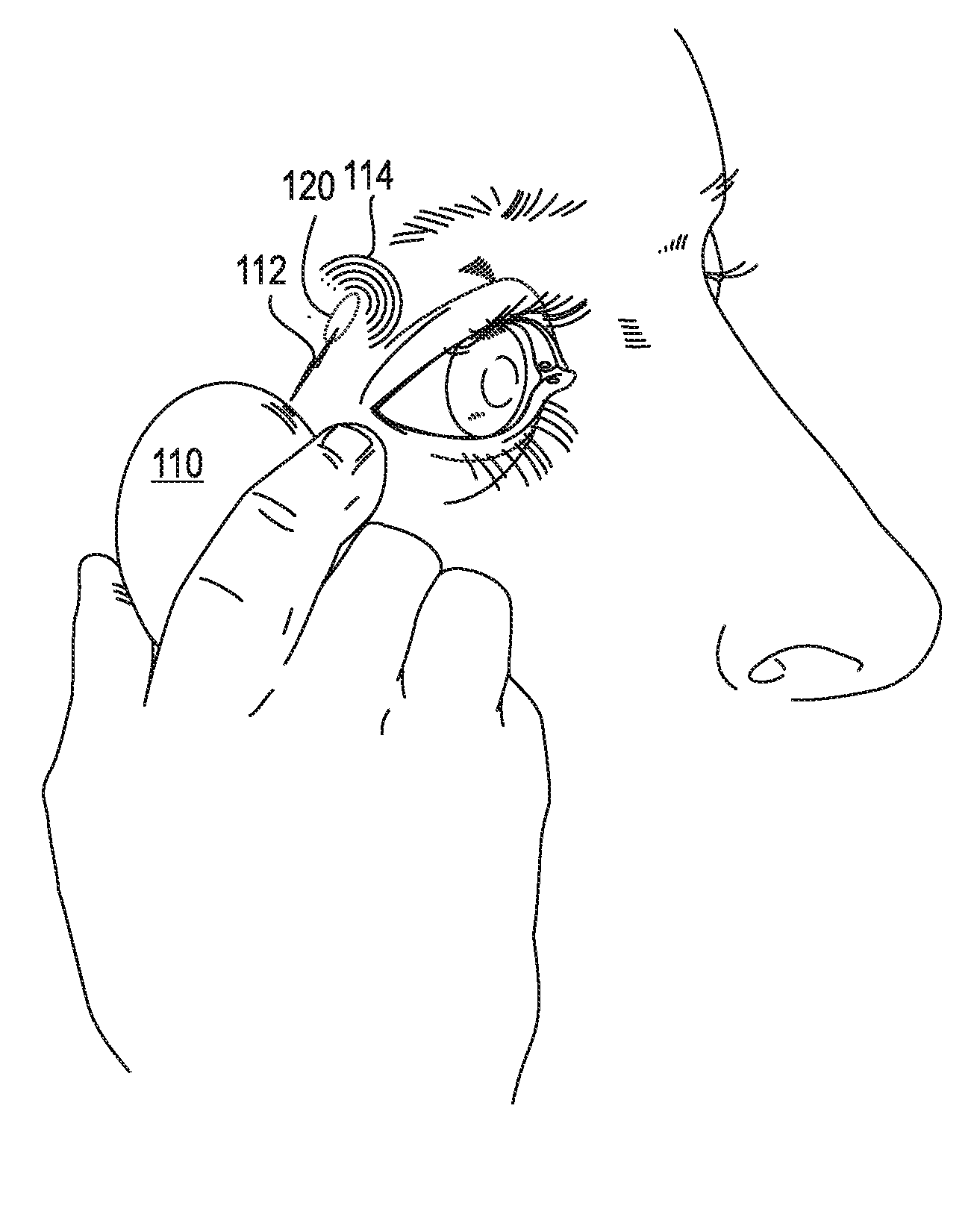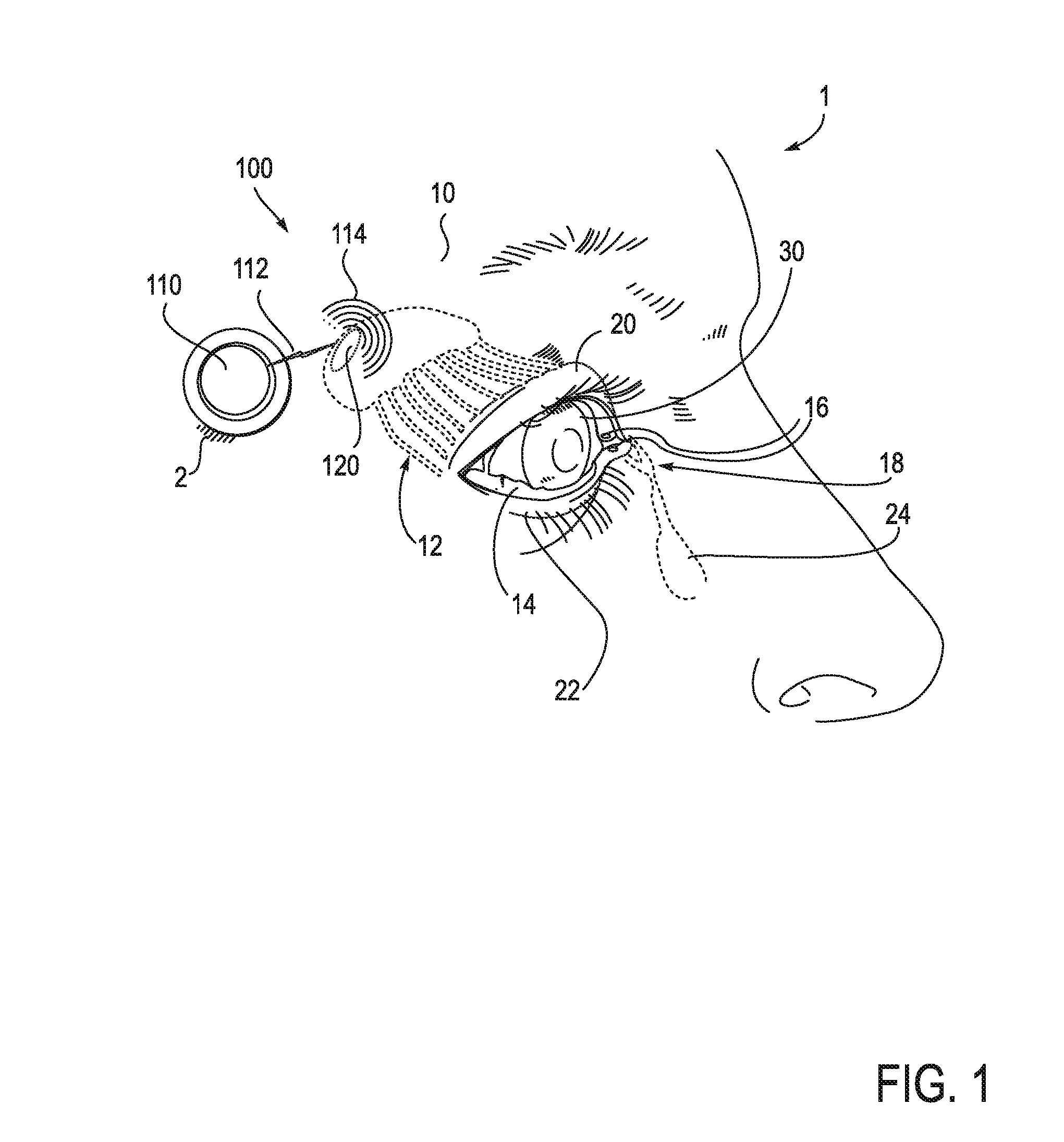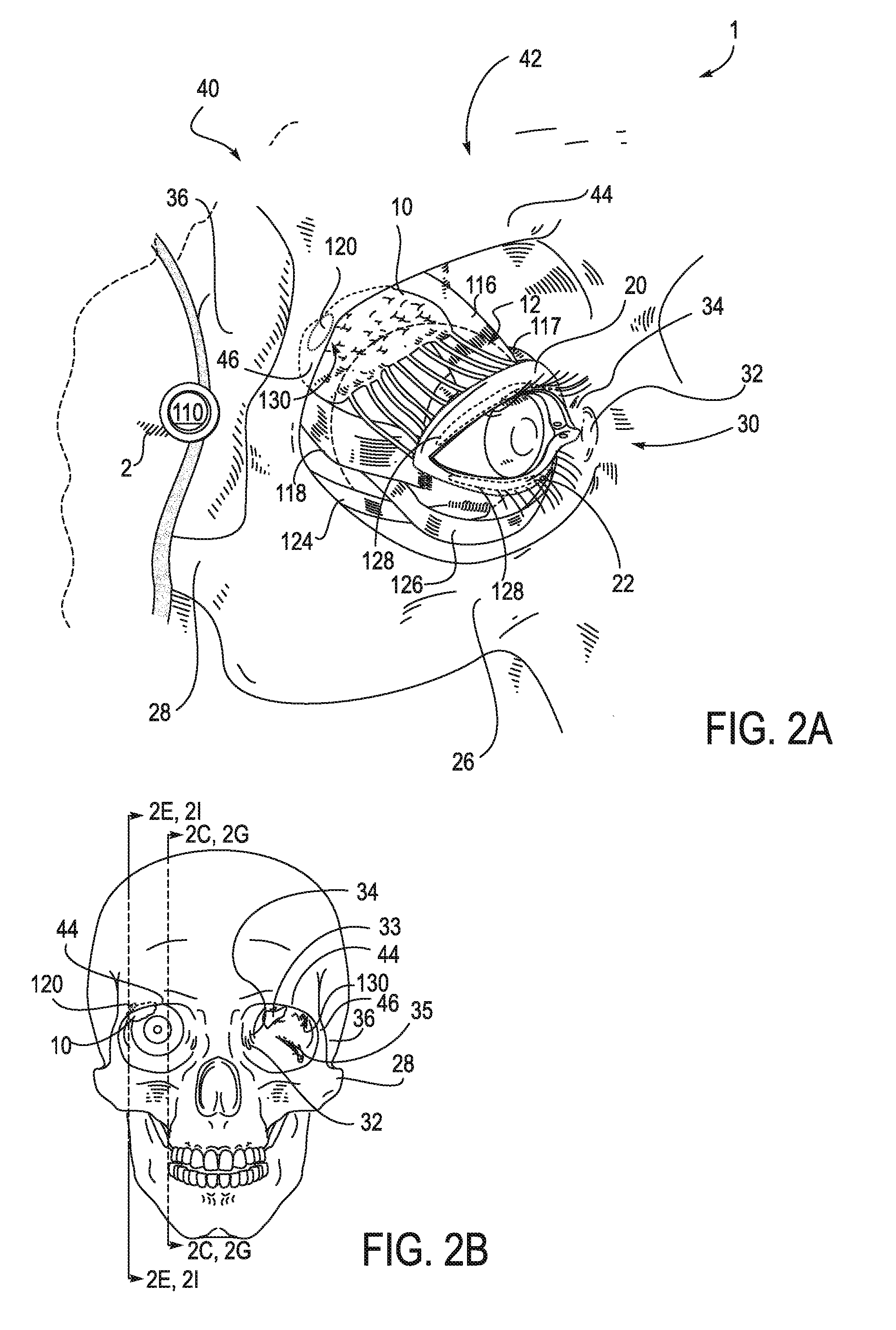Systems and methods for treatment of dry eye
a technology of dry eye and system, applied in the field of stimulation system, can solve the problems of poor ocular surface health, dramatic shift in quality of life, crippling some patients, etc., and achieve the effect of increasing tear production
- Summary
- Abstract
- Description
- Claims
- Application Information
AI Technical Summary
Benefits of technology
Problems solved by technology
Method used
Image
Examples
Embodiment Construction
[0078]The present invention relates to a stimulation system for stimulating anatomical targets in a patient for treatment of dry eye. The stimulation system may include a controller and a microstimulator. The controller may be implemented external to or internal within the microstimulator. In various embodiments, the components of the controller and microstimulator may be implemented in a single unit or in separate devices. When implemented separately, the controller and microstimulator may communicate wirelessly or via a wired connection. The microstimulator may generate pulses from a signal received from the controller and apply the signal via one or more electrodes to an anatomical target. In various embodiments, the microstimulator does not have any intelligence or logic to shape or modify a signal, but rather is a passive device configured to generate a pulse based on a signal received from the controller. Unlike other implantable stimulation devices, the passive elements of th...
PUM
 Login to View More
Login to View More Abstract
Description
Claims
Application Information
 Login to View More
Login to View More - R&D
- Intellectual Property
- Life Sciences
- Materials
- Tech Scout
- Unparalleled Data Quality
- Higher Quality Content
- 60% Fewer Hallucinations
Browse by: Latest US Patents, China's latest patents, Technical Efficacy Thesaurus, Application Domain, Technology Topic, Popular Technical Reports.
© 2025 PatSnap. All rights reserved.Legal|Privacy policy|Modern Slavery Act Transparency Statement|Sitemap|About US| Contact US: help@patsnap.com



